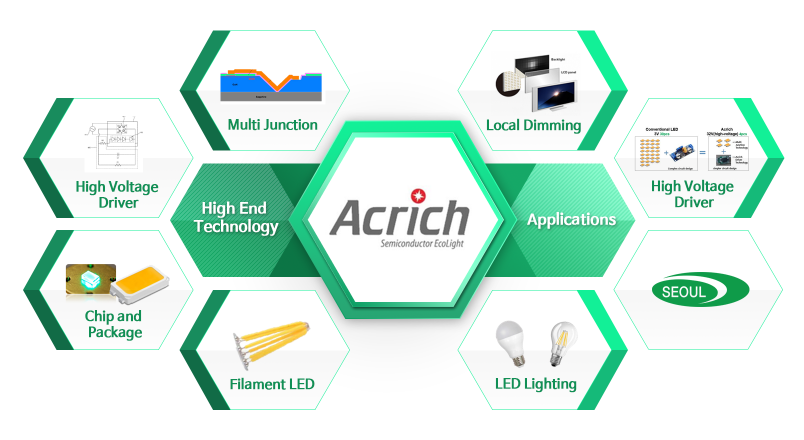Seoul Semiconductor reported that it and Seoul Viosys have successfully resolved two patent infringement lawsuits filed in the U.S. Federal District Court for the Central District of California against Archipelago Lighting, a U.S.-based LED lighting company.
Seoul filed the first patent infringement lawsuit against Archipelago in September 2017, accusing Archipelago of selling LED products which infringed 12 LED patents covering various aspects of Seoul’s long-established Acrich technology. A few months later, Seoul filed a second patent litigation against Archipelago for infringement of an additional 8 other Acrich technology patents.

(Image: Seoul Semiconductor)
In the lawsuits, Archipelago acknowledged that LED components used in its LED light bulbs were manufactured by several third party suppliers. Although Archipelago had no knowledge of any Seoul Semiconductor patents, or the possibility of infringement, Archipelago did not dispute that the LED light bulbs in question infringed Seoul Semiconductor’s patents. Archipelago also did not dispute the validity of the relevant Seoul Semiconductor patents and agreed to pay a license fee in order to affirm its commitment to respecting the intellectual property rights of others. Based upon these admissions, the California Central district court entered judgments in favor of Seoul in these cases. Seoul’s asserted patents include technologies for LED drivers for high-voltage operations, Acrich MJT (multi junction technology – over 6V high power chip), filament LED bulb structures, LED packaging, LED epitaxial growth, and LED chip fabrication.
Seoul is the pioneer of Acrich technology that enables high-voltage operation with a high power output using only a small number of LED units. Specifically, Acrich technology utilizes proprietary LED driver technology to enable high-voltage operation, as well as proprietary MJT technology for mounting and integrating many LEDs within a small area. This maximizes the available space in LED products and power efficiency by 20 percent, facilitating a simple circuit design and significantly reducing the size and cost of LED products.












